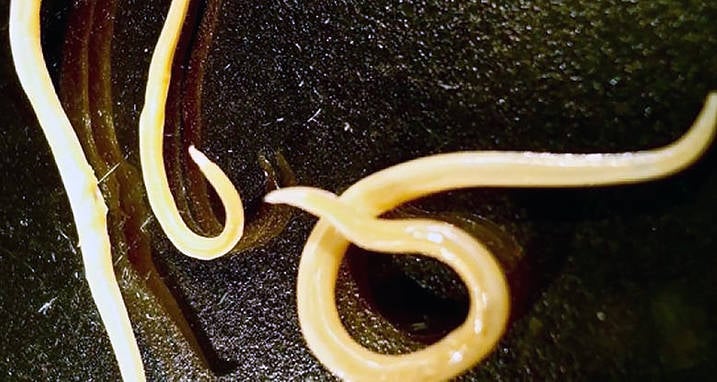 Frozen worms reanimated after 30,000 years, shipwreck with priceless cargo discovered, ancient handprint provides insight on Europe's "lost people."These Worms Unfrozen After More Than 30,000 Years Are Now The Oldest Living Animals On Earth
Frozen worms reanimated after 30,000 years, shipwreck with priceless cargo discovered, ancient handprint provides insight on Europe's "lost people."These Worms Unfrozen After More Than 30,000 Years Are Now The Oldest Living Animals On Earth

The Siberian TimesThe two nematode worms after they’d been thawed.
Can you imagine being awoken from a 42,000-year nap? Well, that’s exactly how one recently reanimated worm in Russia is feeling right now.A new report, published this week in Doklady Biological Sciences, revealed that two prehistoric roundworms — one 42,000 years old and another 32,000 years old — were miraculously brought back to life in Petri dishes.
Explorers Discover 113-Year-Old Russian Shipwreck Believed To Have Cargo Worth Over $100 Billion
Off the coast of an island in South Korea, a team of explorers found a Russian warship that was sunk 113 years ago during the Russo-Japanese war. They believed that the ship held 200 tons of gold bullion and coins worth $130 billion.
On July 15, a joint team of experts from South Korea, United Kingdom, and Canada discovered the wreck. The 5,800-ton ship was a mile off the coast of the South Korean island of Ulleungdo and more than 1,400 feet below sea level.
Unique Discovery Of Ancient Handprint Gives A Rare Glimpse Into “Europe’s Lost People”

STEVE DOCKRILLThe ancient stone anvil with the preserved handprints.
Archeologists have made a rare and exciting discovery that sheds light on the culture of an ancient mysterious people.The Picts, also known as “Picti” (meaning “Painted Ones” in Latin), were made up of a group of tribes that comprised the largest kingdom in Dark Age Scotland. But despite fighting off attempted conquests by both Romans and Germanic Angles (thus allowing present-day Scotland to be the culturally independent region that it is), surprisingly little is known about “Europe’s Lost People.”
At an excavation site known as the Knowe of Swandro on Rousay, a remote Scottish island, archeologists’ uncovered a stone anvil that goes back 1,500 years. And incredibly, there are handprints and knee imprints that have survived through the centuries still visible.
 Frozen worms reanimated after 30,000 years, shipwreck with priceless cargo discovered, ancient handprint provides insight on Europe's "lost people."These Worms Unfrozen After More Than 30,000 Years Are Now The Oldest Living Animals On Earth
Frozen worms reanimated after 30,000 years, shipwreck with priceless cargo discovered, ancient handprint provides insight on Europe's "lost people."These Worms Unfrozen After More Than 30,000 Years Are Now The Oldest Living Animals On Earth



No comments:
Post a Comment